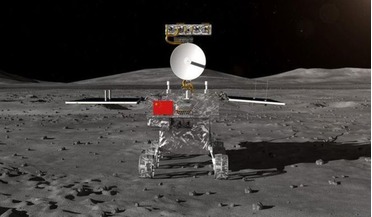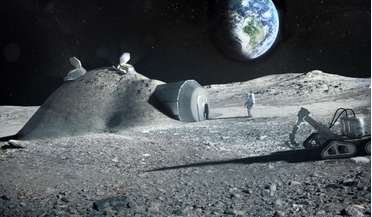 April 2020
Protecting against the dangers of space radiation
April 2020
Protecting against the dangers of space radiation
... missions. Apollo mission EVAs ranged from two hours on Apollo 9 to 22 hours on Apollo 17. A future lunar base might require up to 30,000 hours of EVA exploration. Individual resistance Radiation is quite tricky in the way that it can ...
 10 December 2018
First far side of the Moon mission underway
10 December 2018
First far side of the Moon mission underway
...Chang'e 4 have been adapted from Chinas earlier Chang'e 3 lunar probe, which took up residence on the Moon in December...sending astronauts to the Moon and to one day establish a lunar base. The nation has two more missions lined up, Chang’e 5 ...
 March 2016
Why We Need Space Artists
March 2016
Why We Need Space Artists
...? ‘Two Worlds’ - my most recent ‘traditional’ painting. I wanted to show the ‘lived-in’ interior of a lunar base but also to contrast the bleak, monochrome lunar landscape with the blue skies, clouds, snowy mountains, lake and vegetation of our own...
 19 April 2019
Mission to Mars by 2033 not viable says independent report
19 April 2019
Mission to Mars by 2033 not viable says independent report
... is indeed the key. In order to reach Mars, a viable lunar-base is needed that can be used as a platform for launching vehicles ...then perhaps not all is lost. But, building a lunar infrastructure, while developing a host of new deep space technologies...
 October 2015
How to 3D-print a habitat on Mars
October 2015
How to 3D-print a habitat on Mars
... construction of terrestrial Mars analogue sites would be transferable to the Martian environment. ESA’s idea of a 3D-printed lunar base has a dome designed by architects Foster + Partners As a concept, the LavaHive approach is a great example of how...
 30 March 2020
Study shows astronaut urine could help build moon bases
30 March 2020
Study shows astronaut urine could help build moon bases
...colonisers plan on building their settlements. To see just how suitable human pee would be in helping to construct a lunar base, the researchers whose lead author on the paper is Shima Pilehvar at Østfold University College, Norway, used a 3D printer...